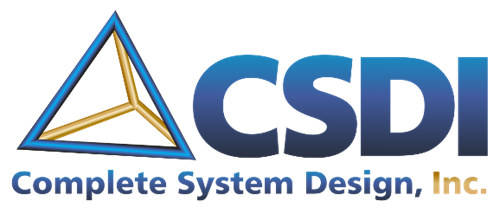75 S. Main Street 7-298
Concord
NH 03301
Office: 603-369-4499
Email: info@csdi.com

There is an "old saw" known to technology professionals as Moore's Law, which postulates that the capability of computing technology will roughly double every 12 to 18 months. The phenomenon, described by Gordon Moore, co-founder of Intel in 1965 and has largely held true for half a century!
So why, with the spectacular advance in technology, do information systems remain such a headache and cost so much?
There are several answers to that question and, some very good news for small businesses.
For more than half a century information technology companies have been selling hardware. The boxes were pretty good and did not ware out. In order to maintain growth, manufactures needed to find new markets and ensure obsolescence to encourage additional sales to existing customers. Sales to existing customers is known in this industry as "churn".
Dependence on churn puts the interests of the technology provider at odds with the customer. The model can not last forever.
One way is to rent processing time on computers rather than selling boxes.
This single change in the business model is the essence of cloud computing. It is having a profound effect on the industry. And, is a tremendous opportunity for small businesses.
In the old model, manufacturers made money selling boxes for more than they cost. As costs came down, the margins shrank and growth depended on selling even more boxes. In the new model, the revenue stream does not stop after the sale. Once the system is deployed it generates a cash stream from then on.
Also, by marketing multiple data services, technology providers can sell computing capability to many markets all running on one platform.
No capital investment - Cloud computing allows businesses to purchase the capacity they need as they need it.
Scale - It is relatively easy to increase capacity to accommodate growth or peak load and decrease capacity, and expense, when things are slow.
Usability - It is difficult to deploy servers correctly. In the cloud services model reliability, information security, back-ups and privacy are the responsibility of the technology vendor.
Targeted Use - Business no longer need to purchase equipment and associated staff to utilize a new system. Often, the service is available "in the cloud", easily implemented, less expensive and more reliably than hosted on premises.
Administration - Where businesses needed to hire a growing array to technical experts to manager in-house computing environments, technology providers now provide much of the administrative support.
We expect cloud computing to be a boon to medium and small businesses for some time to come.
In the cloud paradigm, the interests of providers and consumer more closely align. Inefficient software is now a burden to providers and customers alike. Providers have an incentive to make system run efficiently and to offer more and better products available to customers.
We are also beginning to see exciting, inexpensive services that promote the integration. Software systems that used to be captive in their own silos can share data and work together. And, new tools are becoming available that hyper-charge programmer productivity.
Innovation in information technology is rushing past like a storm tide. The trends are difficult to track, even for technology professionals. Medium and small business owners have little chance of taking advantage of this trend without expert guidance.
Complete System Design, Inc. was created to help medium and small companies take advantage of cloud computing and apply the power of Moore' Law to your business operation.
Call today.
In order to change an existing paradigm you do not struggle to try and change the problematic model. You create a new model and make the old one obsolete.
R. Buckminster Fuller
